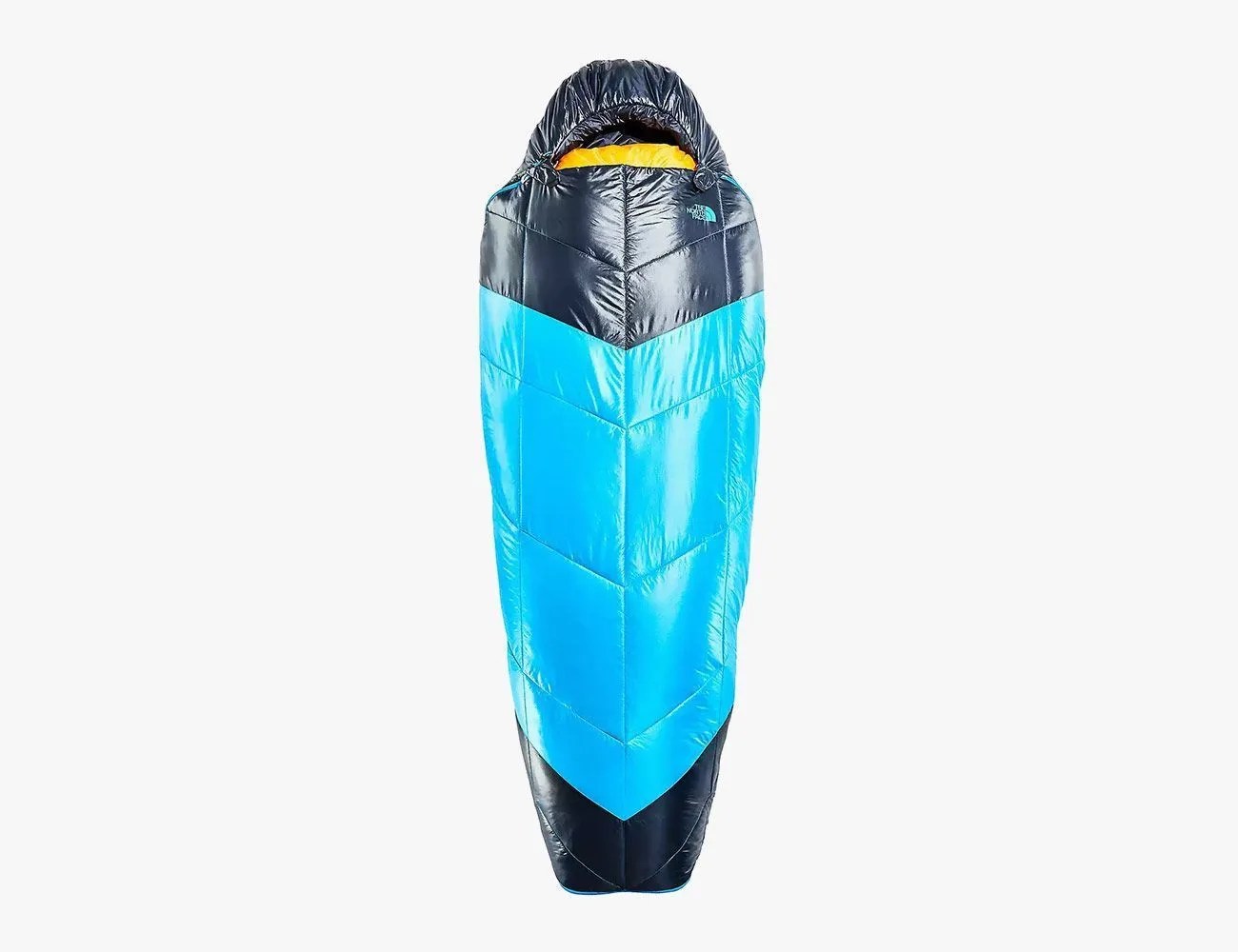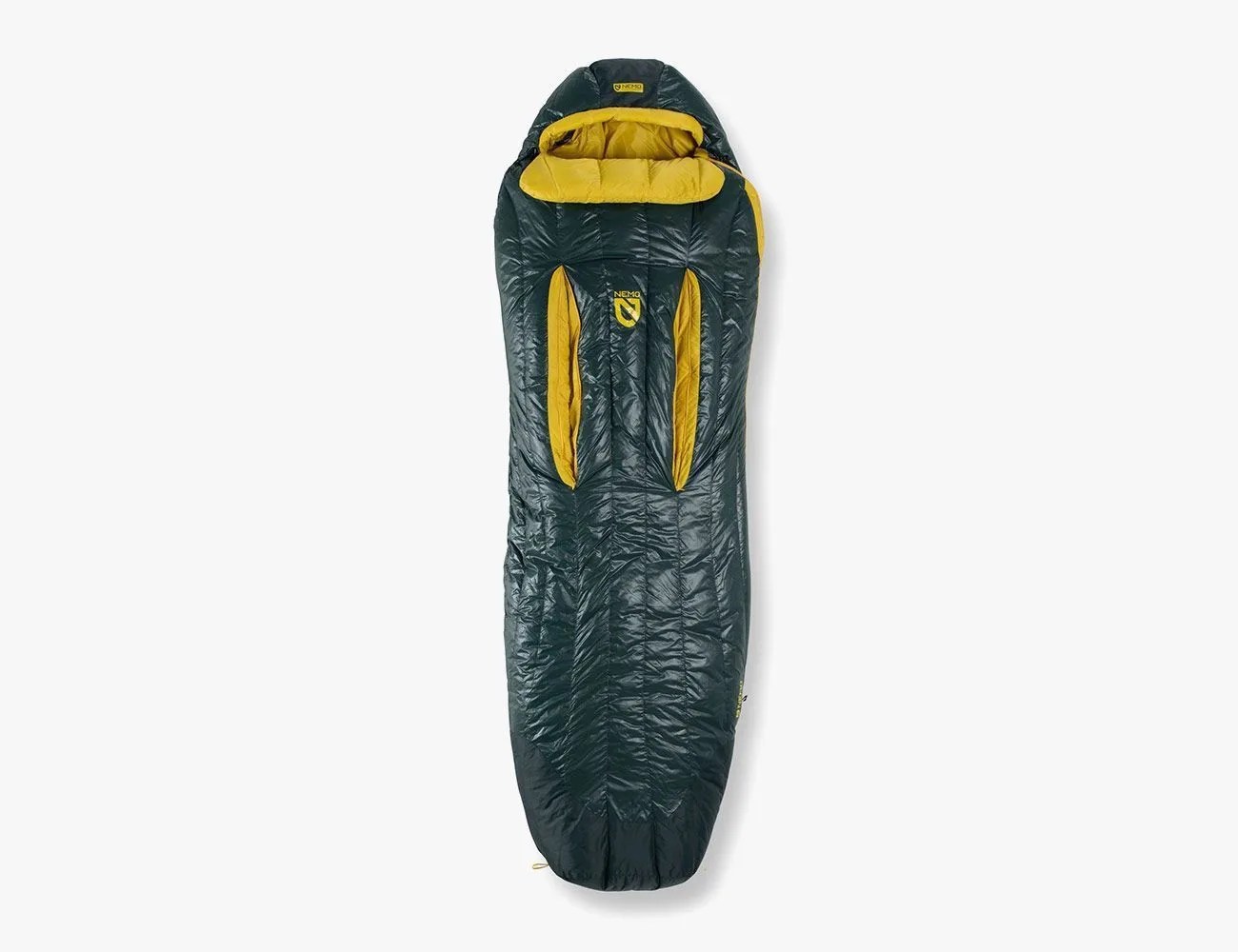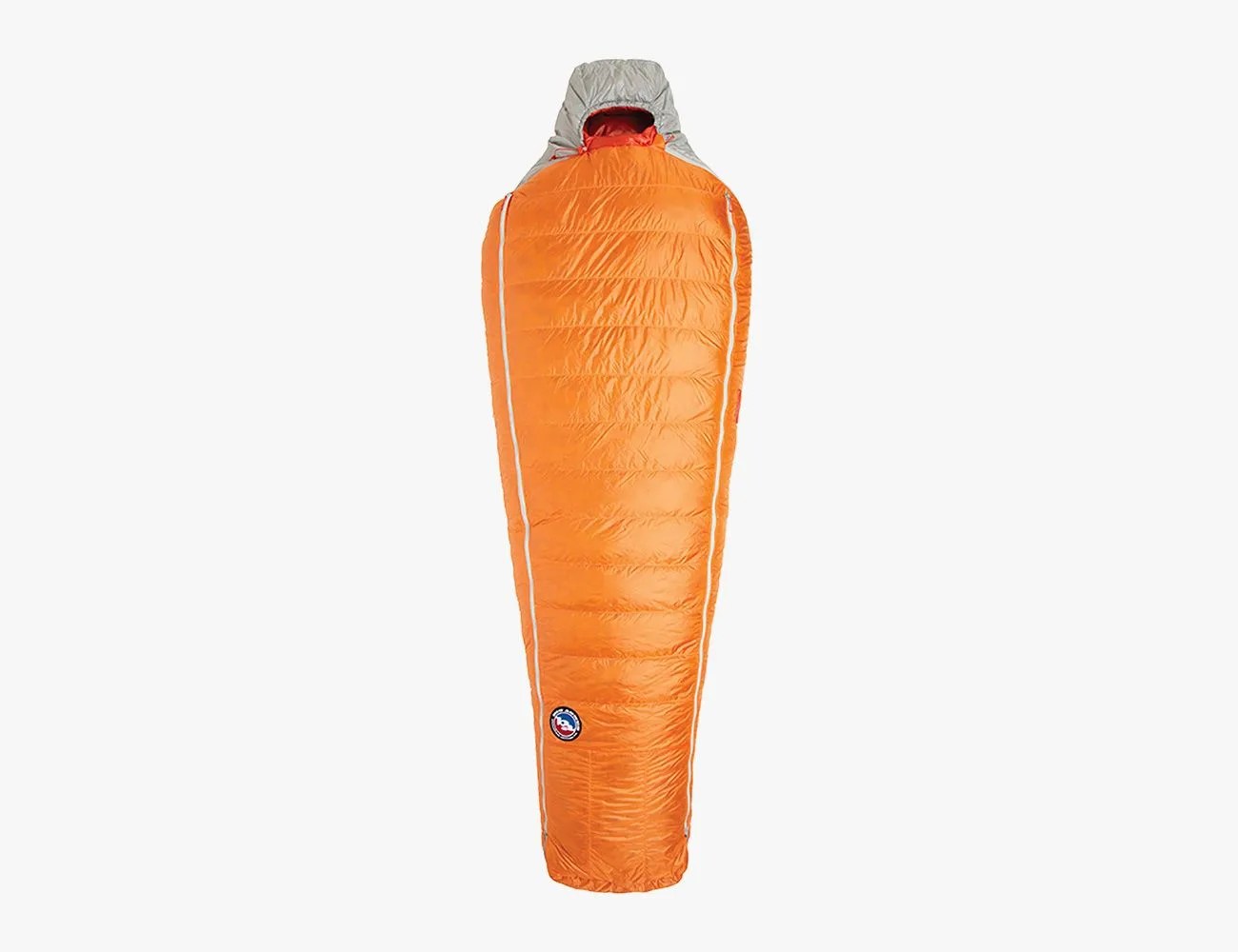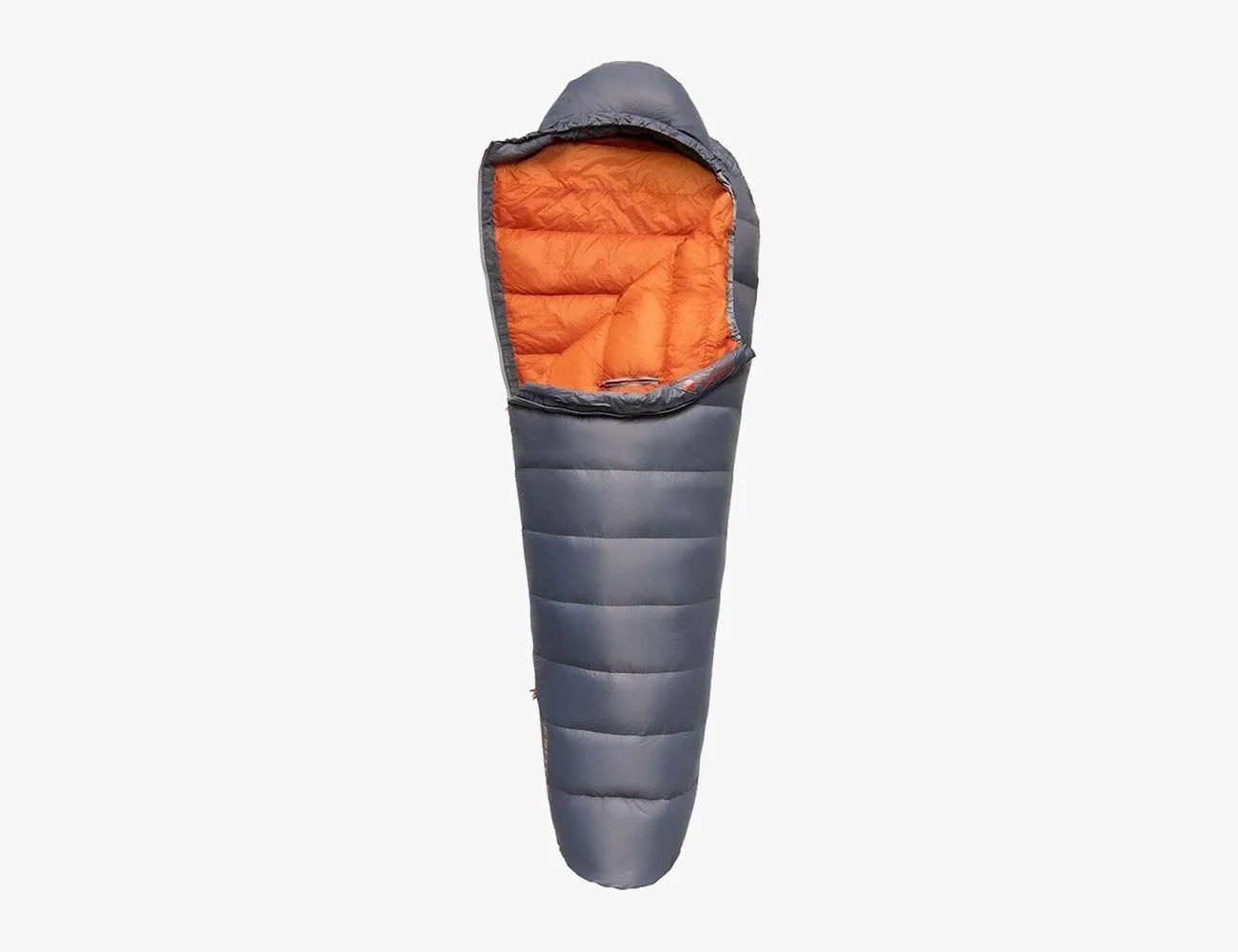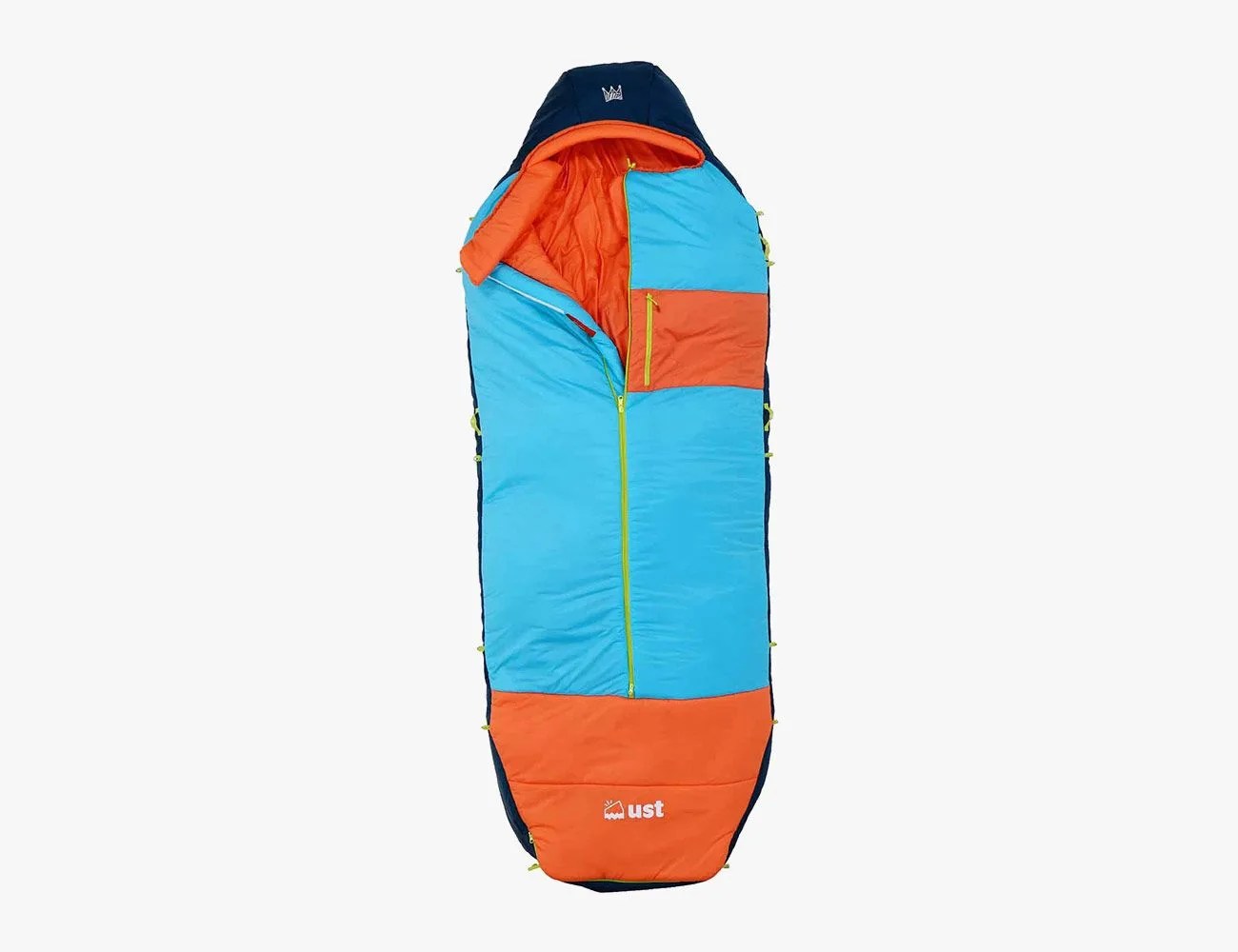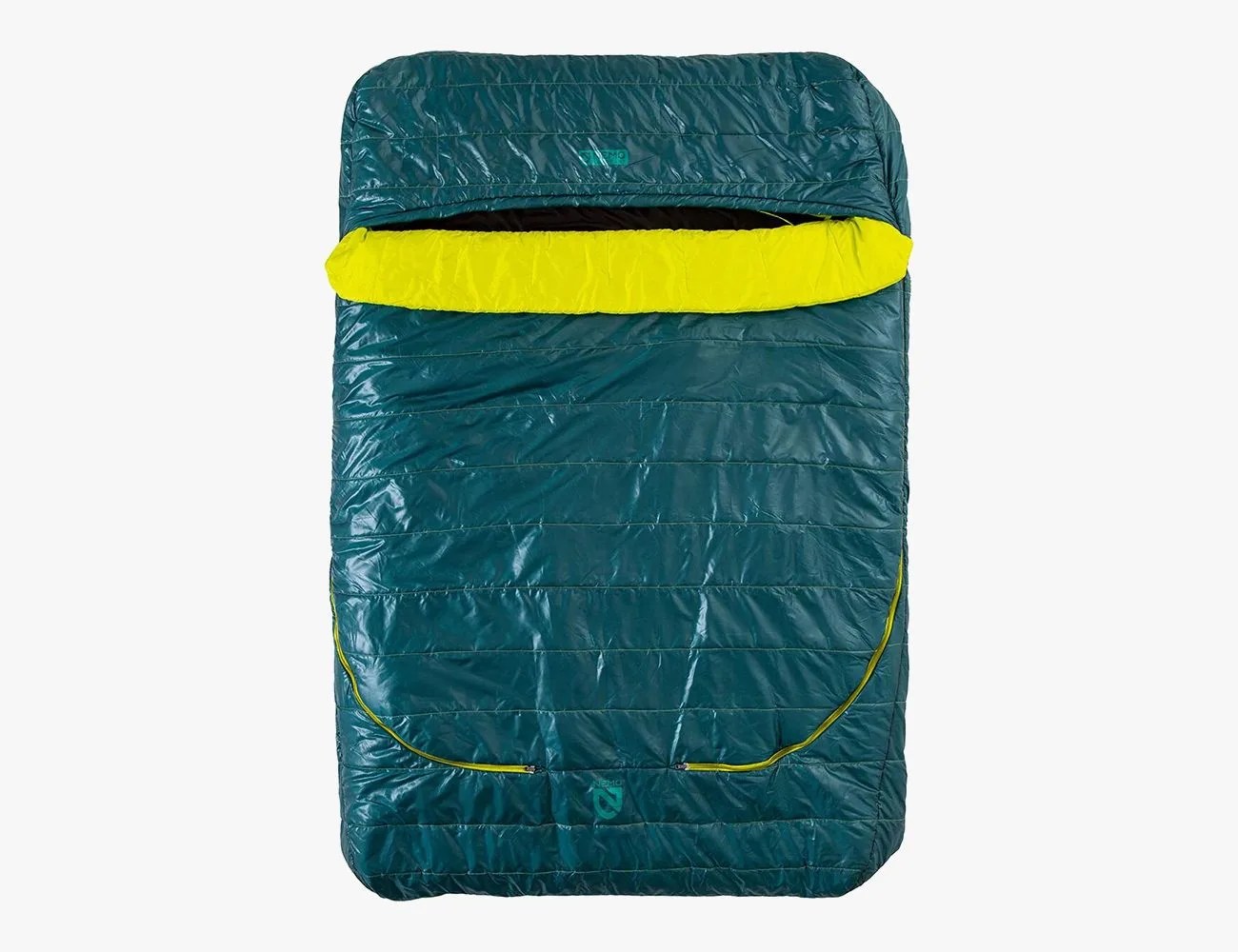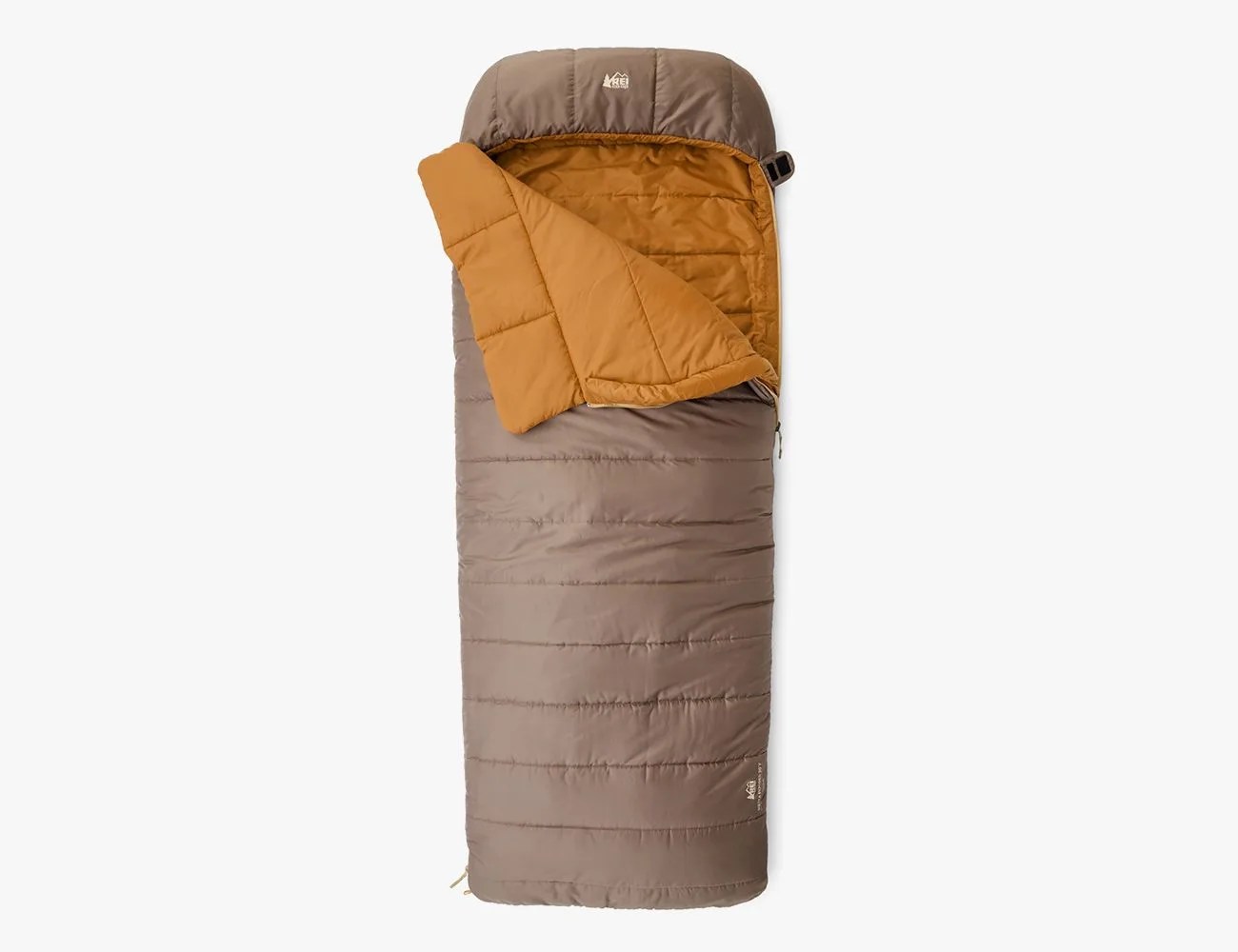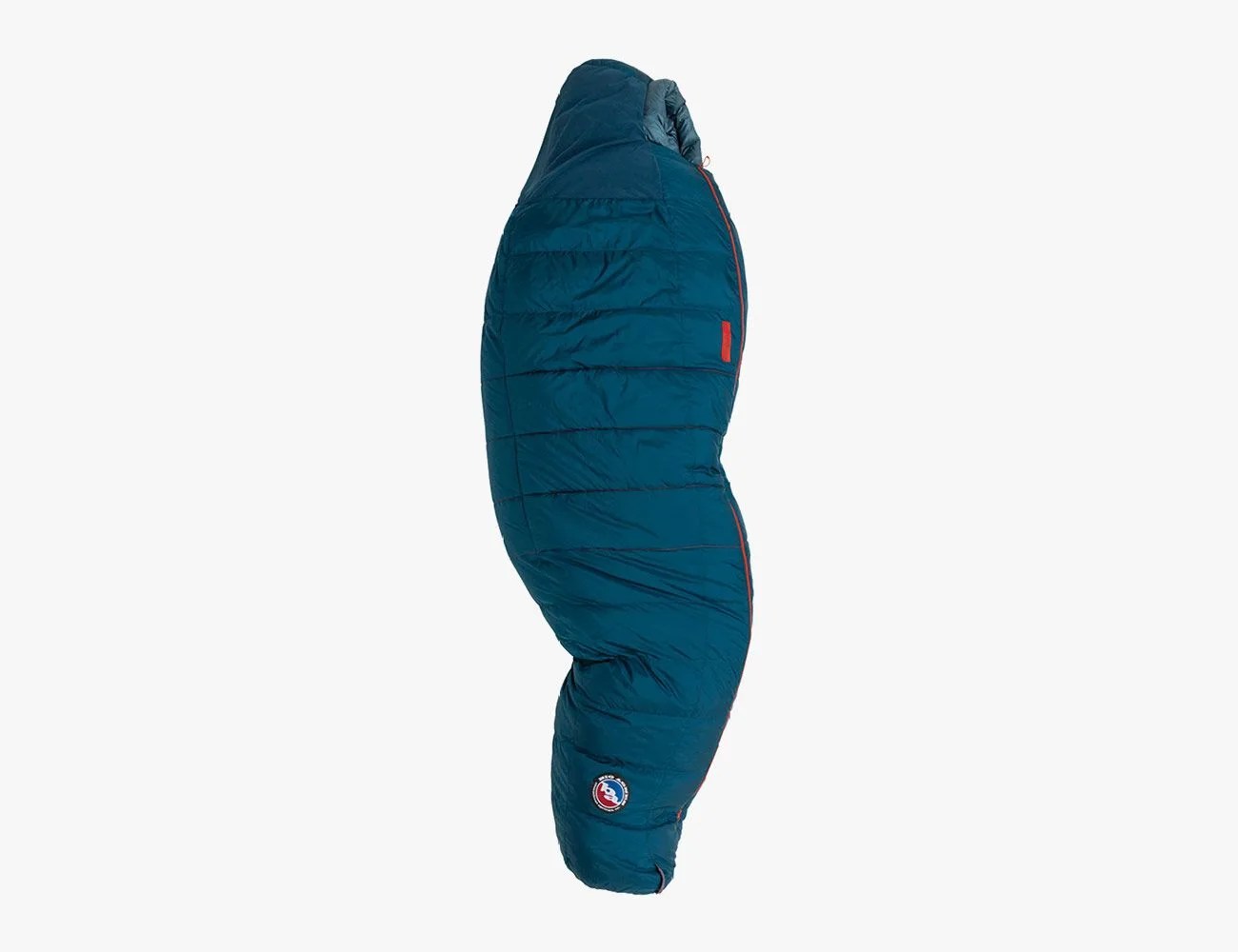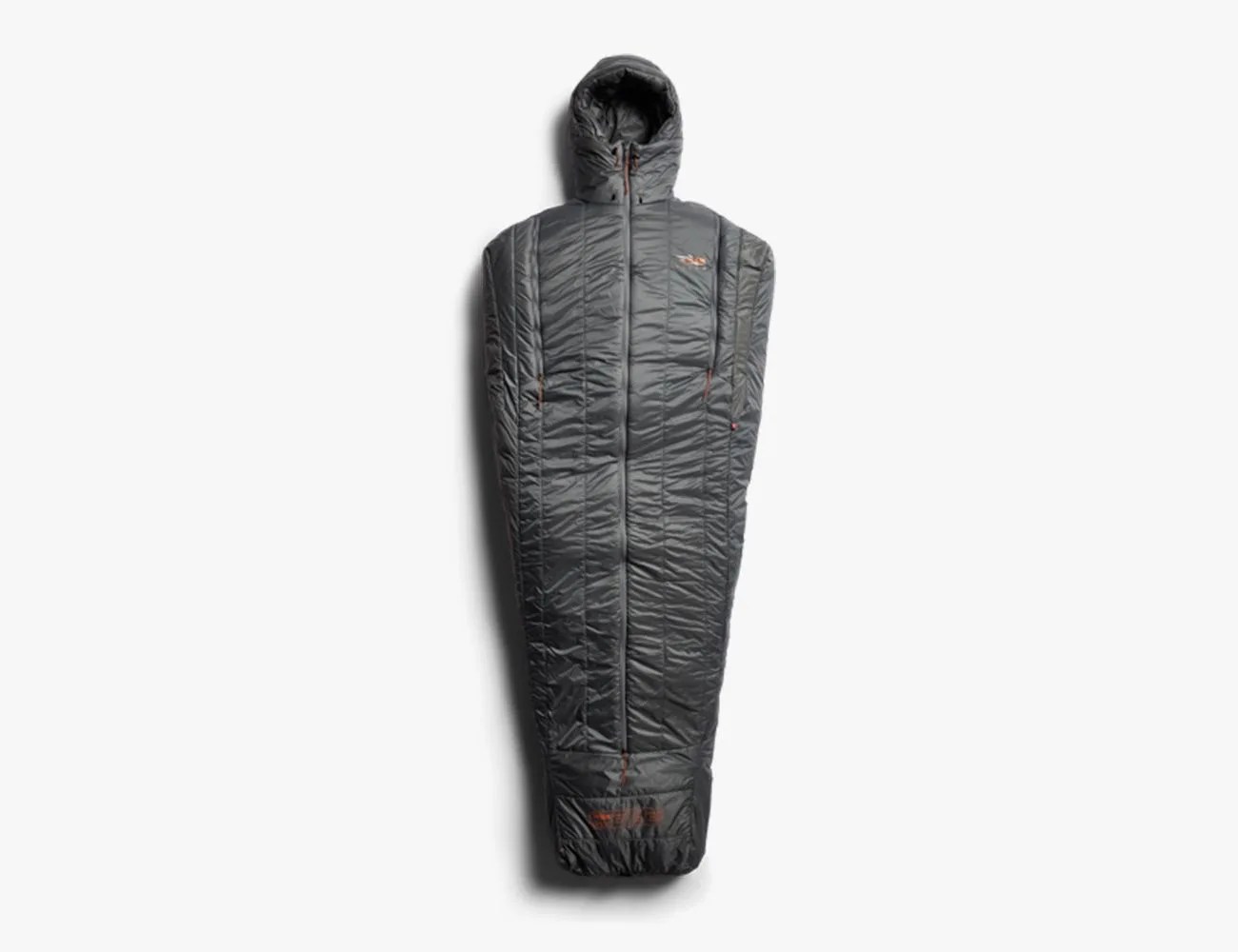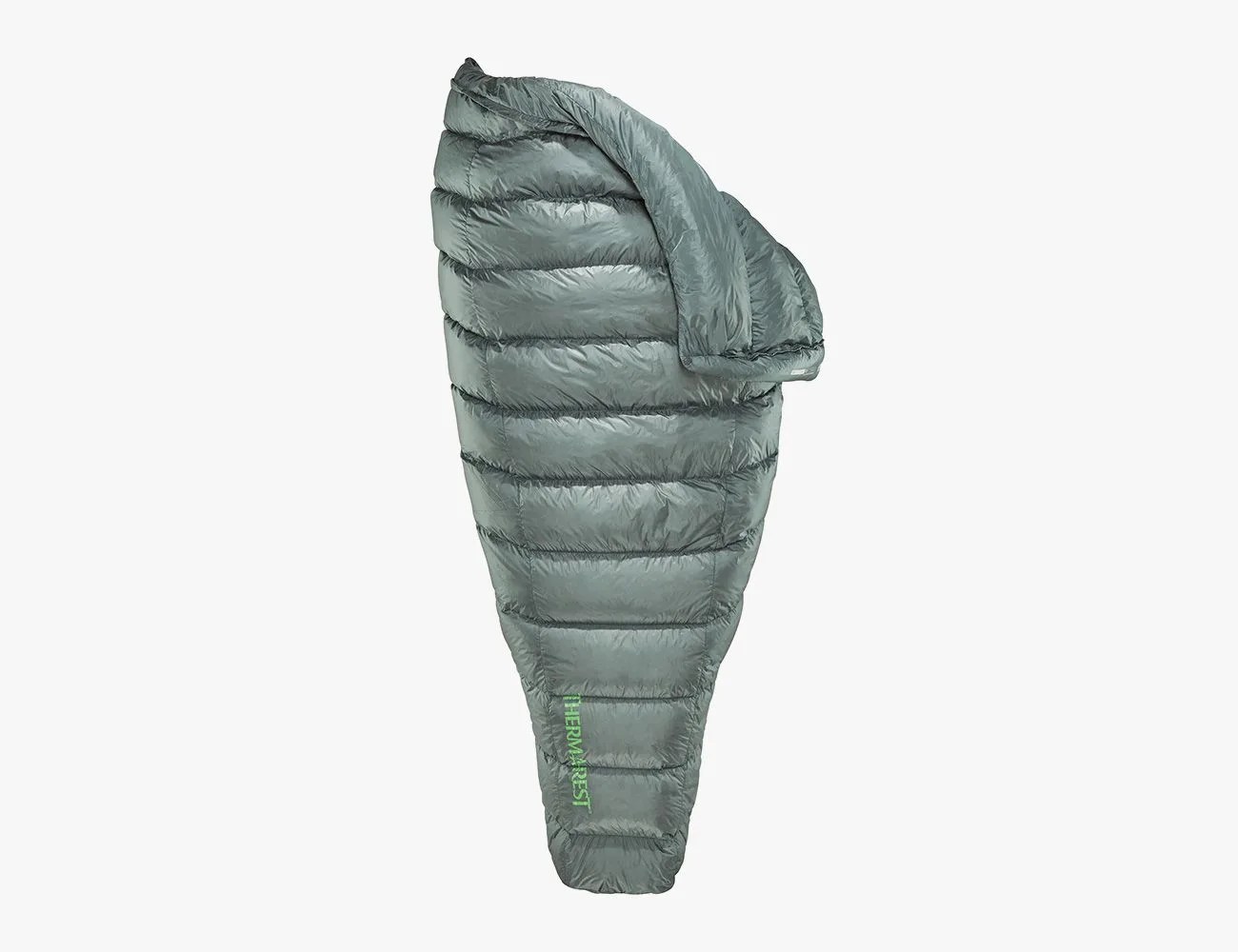If you were lucky enough to tune into the Discovery Channel’s Man vs. Wild during its heyday, you might’ve witnessed Bear Grylls, a former British Special Air Service operator and the show’s host, make TV magic by gutting a dead camel and demonstrating how to climb inside the carcass for warmth and shelter. The sequence of teeth-clenching footage is perhaps the best reminder that, hey: sleeping bags are pretty cool.
Sleeping bags, in fact, are a camping essential — and even those of us who never bed down under the stars may well keep one around the house as emergency bedding. We tend not to upgrade our sleeping bags with the same frequency as other pieces of outdoor gear, like hiking boots or down jackets. But sleeping bags have come a long way in the past decade.
This guide — which we’ve organized by fill type and temperature rating — represents the best of the current class. Here’s how to choose the best sleeping bag.
Products in the Guide
-
The North Face One Bag Sleeping Bag
Best Overall Sleeping Bag
Read more -
Nemo Riff 30 Sleeping Bag
Best Upgrade Sleeping Bag
Read more -
Big Agnes Torchlight UL 30 Sleeping Bag
BEST ULTRALIGHT Sleeping Bag
Read more -
Kelty Cosmic 40 Sleeping Bag: 40F Down
BEST BUDGET Sleeping Bag
Read more -
Ust Monarch Sleeping Bag
MOST INNOVATIVE DESIGN
Read more -
Nemo Jazz Duo 30F Sleeping Bag
Best Two Person Sleeping Bag
Read more -
REI Siesta Hooded 20 Sleeping Bag
BEST CASUAL SLEEPING BAG
Read more -
Montbell Seamless Down Hugger WR 900 #3
BEST FOR WET ENVIRONMENTS
Read more -
Big Agnes Sidewinder SL 35˚
Best For Side Sleepers
Read more -
Sitka Kelvin Aerolite 30 Sleeping Bag
Best For Hunting
Read more -
Therm-a-Rest Vesper 45F/7C Quilt
BEST TRAIL QUILT
Read more
Temperature Ratings
Every sleeping bag comes with a temperature rating, usually represented roughly by a number in its name. That number comes from third-party lab testing. Those labs test for two numbers: a comfort rating and a lower limit rating. The comfort rating is the environmental temperature in which a sleeping bag can provide sufficient warmth for colder sleepers; the lower limit rating represents the temperature at which a warm sleeper will be comfortable.
The number in a sleeping bag’s name may not be its exact temperature rating; brands tend to round numbers to the nearest five or zero. For example, REI’s Trailbreak 30 has a lower limit rating of 29 degrees Fahrenheit and a comfort rating of 38 degrees Fahrenheit.

